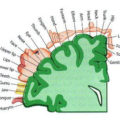
Findings from the largest-ever study of orgasmic and ejaculatory dysfunction suggest that orgasmic dysfunction could be as prevalent among men as it is among women.
The study, appearing in the British Journal of Urology International, followed more than 12,000 men with mild to severe erectile dysfunction and found that two-thirds of those men were unable to have an orgasm and more than half had problems with ejaculation.
“While medications like Viagra or Cialis have been successful in helping many of these men, our research suggests there are other common sexual issues that remain largely unaddressed,” says Dr. Darius Paduch, the study’s lead author and sexual medicine specialist at New York-Presbyterian Hospital/Weill Cornell Medical Center.
Paduch says that until now, male sexual function has focused entirely on penile rigidity, but problems with ejaculation – decreased force or volume – and orgasm are just as critical. “Non-erectile sexual dysfunction is underreported and undertreated due to social stigma and misunderstandings about the physiology of male sexual response and orgasmic dysfunction in particular. Our study shows that orgasmic dysfunction could be as prevalent among men as it is among women.”
The most common ejaculatory dysfunction is premature ejaculation, but the condition also describes delayed ejaculation, inability to ejaculate, painful ejaculation, retrograde ejaculation, as well as a reduced volume of ejaculate or diminished force of ejaculation. Orgasmic dysfunction is defined as the absence of an orgasm.
The study notes that ejaculatory and orgasmic dysfunction can be caused by low testosterone and minor brain injury such as that sustained by motor vehicle accident victims, football players suffering from concussion, or by soldiers with combat-related blast head injuries.
Paduch now plans to measure the biological and subjective changes that occur in men during orgasm and ejaculation and establish whether testosterone-replacement therapy can help men who suffer from non-erectile sexual dysfunction. “The high prevalence of both orgasmic and ejaculatory dysfunction warrants further clinical and translational research into new treatments to improve sexual health and overall quality of life,” he concluded.
Related:
Plastics workers risk impotence, ejaculation difficulties
Hard evidence on cannabis use and erectile dysfunction
Up, Up And Away For Athletes Taking Viagra
Urologists nix surgery in favor of mechanical penile lengtheners
Aspirin, ibuprofen linked to impotence







Comments are closed.